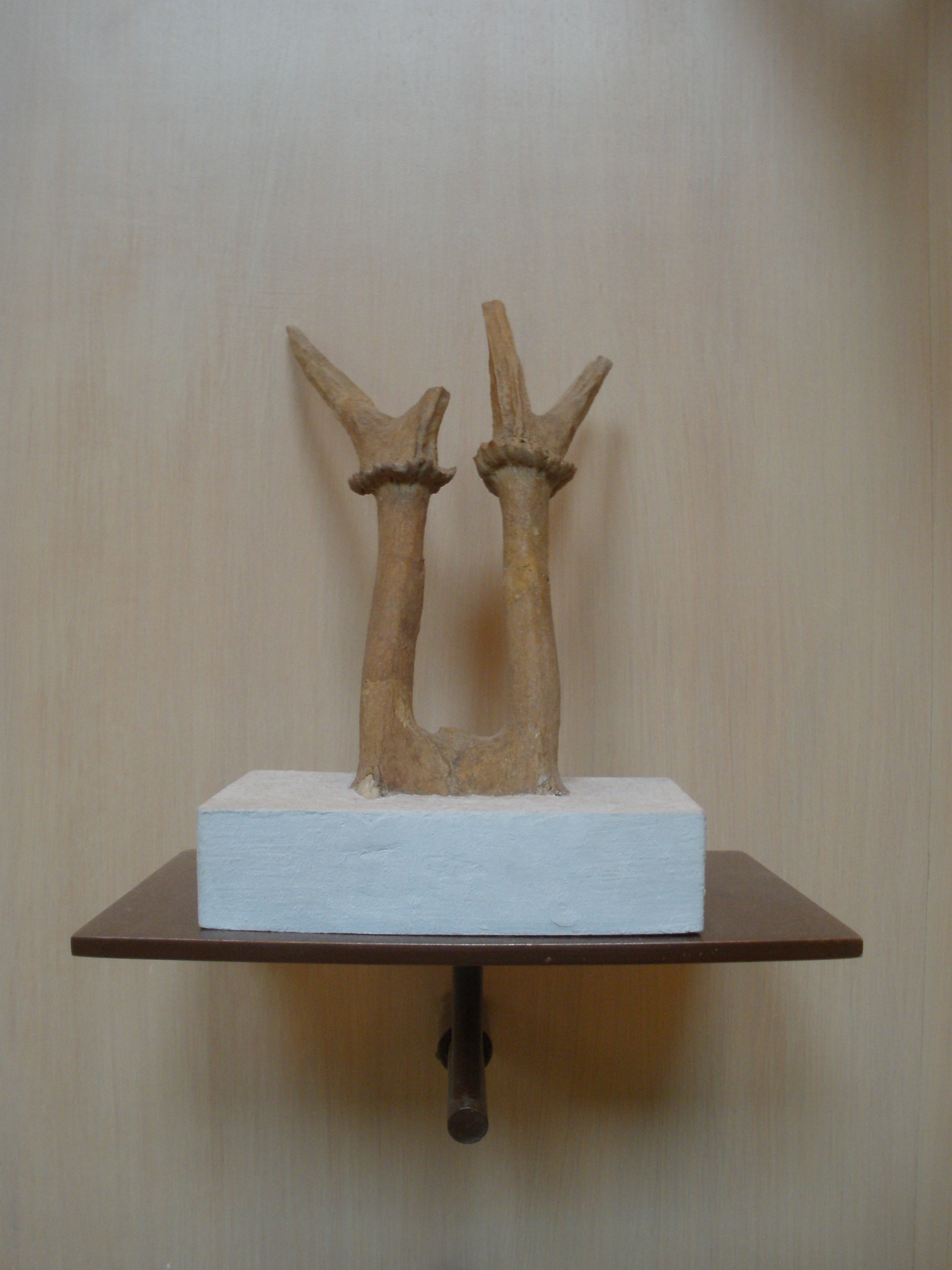Euprox on:
[Wikipedia]
[Google]
[Amazon]
''Euprox'' is an extinct genus of
 The antlers of ''Euprox'' were short, with two small prongs projecting from the main branch. ''Euprox'' is notable for being the earliest deer to possess the presence of a real burr, which are indicative of the border between permanent and deciduous segments of deer antlers. It possessed brachyodont teeth and likely fed on leaves. The environment that ''Euprox'' inhabited would have been warm and humid, with many tropical forests.
The antlers of ''Euprox'' were short, with two small prongs projecting from the main branch. ''Euprox'' is notable for being the earliest deer to possess the presence of a real burr, which are indicative of the border between permanent and deciduous segments of deer antlers. It possessed brachyodont teeth and likely fed on leaves. The environment that ''Euprox'' inhabited would have been warm and humid, with many tropical forests.
deer
Deer or true deer are hoofed ruminant mammals forming the family Cervidae. The two main groups of deer are the Cervinae, including the muntjac, the elk (wapiti), the red deer, and the fallow deer; and the Capreolinae, including the reindeer ...
that lived in Eurasia
Eurasia (, ) is the largest continental area on Earth, comprising all of Europe and Asia. Primarily in the Northern and Eastern Hemispheres, it spans from the British Isles and the Iberian Peninsula in the west to the Japanese archipelago a ...
during the Miocene
The Miocene ( ) is the first geological epoch of the Neogene Period and extends from about (Ma). The Miocene was named by Scottish geologist Charles Lyell; the name comes from the Greek words (', "less") and (', "new") and means "less recen ...
.
Taxonomy
The type species ''Euprox furcatus'' was originally under the genus ''Prox'', but that name was preoccupied. Depéret assigned it to the related genus ''Dicrocerus
''Dicrocerus elegans'' (Its name is Greek for "fork antler") is an extinct species of deer found in France, Europe (related species in Asia). ''Dicrocerus'' probably came from Asia, from the region where true deer are believed to have originated ...
'' in 1887, before it was assigned to its current placement in 1928. ''Euprox dicranocerus'' and ''Euprox minimus'' were transferred to the genus soon after; they were originally described as ''Cervus dicranocerus'' and ''Dicracerus minimus'', respectively.
Description
''Euprox'' was some of the earliest types of deer known to have true antlers. It would have resembled amuntjac
Muntjacs ( ), also known as the barking deer or rib-faced deer, (URL is Google Books) are small deer of the genus ''Muntiacus'' native to South Asia and Southeast Asia. Muntjacs are thought to have begun appearing 15–35 million years ago, ...
in size and appearance, standing at up to in height.
References
{{Taxonbar, from= Q3734596 Prehistoric deer Miocene mammals of Europe Miocene mammals of Asia Prehistoric even-toed ungulate genera Miocene even-toed ungulates